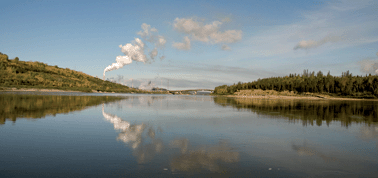Investigations of mercury concentrations in walleye and other fish in the Athabasca River ecosystem with increasing oil sands developments†
Abstract
Recent studies have reported an increasing trend of mercury concentrations in walleye (Sander vitreus) from the Athabasca River, north eastern Alberta (Canada); these studies were based on three years of comparison and attributed the mercury increase to expanding oil sands developments in the region. In order to conduct a more comprehensive analysis of mercury trends in fish, we compiled an extensive database for walleye, lake whitefish (Coregonus clupeaformis), northern pike (Esox lucius) and lake trout (Salvelinus namaycush) using all available data obtained from provincial, federal, and industry-funded monitoring and other programs. Evidence for increasing trends in mercury concentrations were examined for each species by location and year also considering fish weight and length. In the immediate oil sands area of the Athabasca River, mercury concentrations decreased (p < 0.001) in walleye and lake whitefish over 1984–2011. In western Lake Athabasca and its delta, mercury concentrations decreased (p < 0.0001) in northern pike (1981–2009) although no trend was evident for walleye (1981–2005) and lake trout (1978–2009). Mercury concentrations in lake trout from Namur Lake, a small lake west of the oil sands area, were higher in 2007 than 2000 (p < 0.0001); it is difficult to ascribe this increase to an oil sands impact because similar increases in mercury concentrations have been observed in lake trout from similar sized lakes in the Northwest Territories. While mercury emissions rates have increased with oil sands development and the landscape become more disturbed, mercury concentrations remained low in


 Please wait while we load your content...
Please wait while we load your content...